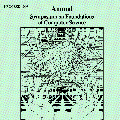We study a class of optimization problems including matrix scaling, matrix balancing, multidimensional array scaling, operator scaling, and tensor scaling that arise frequently in theory and in practice. Some of these problems, such as matrix and array scaling, are convex in the Euclidean sense, but others such as operator scaling and tensor scaling are geodesically convex on a different Riemannian manifold. Trust region methods, which include box-constrained Newton's method, are known to produce high precision solutions very quickly for matrix scaling and matrix balancing (Cohen et. al., FOCS 2017, Allen-Zhu et. al. FOCS 2017), and result in polynomial time algorithms for some geodesically convex problems like operator scaling (Garg et. al. STOC 2018, B\"urgisser et. al. FOCS 2019). One is led to ask whether these guarantees also hold for multidimensional array scaling and tensor scaling. We show that this is not the case by exhibiting instances with exponential diameter bound: we construct polynomial-size instances of 3-dimensional array scaling and 3-tensor scaling whose approximate solutions all have doubly exponential condition number. Moreover, we study convex-geometric notions of complexity known as margin and gap, which are used to bound the running times of all existing optimization algorithms for such problems. We show that margin and gap are exponentially small for several problems including array scaling, tensor scaling and polynomial scaling. Our results suggest that it is impossible to prove polynomial running time bounds for tensor scaling based on diameter bounds alone. Therefore, our work motivates the search for analogues of more sophisticated algorithms, such as interior point methods, for geodesically convex optimization that do not rely on polynomial diameter bounds.
翻译:我们研究的是一组优化问题, 包括矩阵缩放、 矩阵平衡、 多层面阵列缩放、 操作员缩放、 以及从理论和实践中经常出现的弹性缩放。 其中一些问题, 如矩阵和阵列缩放等, 是厄科里底亚意义上的 convex, 但其它问题, 如操作员缩放和阵列缩放, 是不同里曼尼方形的大地测量式的 convex 。 信任区域方法, 包括箱制牛顿方法, 已知能够非常迅速地产生高精度的解决方案, 用于矩阵的缩放和矩阵的平衡( Cohen等人, FOCS 2017, Allen- Zhu 等人, FOCS 2017) 。 这些问题包括矩阵缩放的矩阵和阵列的缩放, 并导致一些多数值的多数值时间计数, 包括我们所知道的直径直缩缩缩缩放的阵列数, 其直径直缩缩缩缩缩缩成三维的阵列的阵列的阵列的阵列的阵列数。



